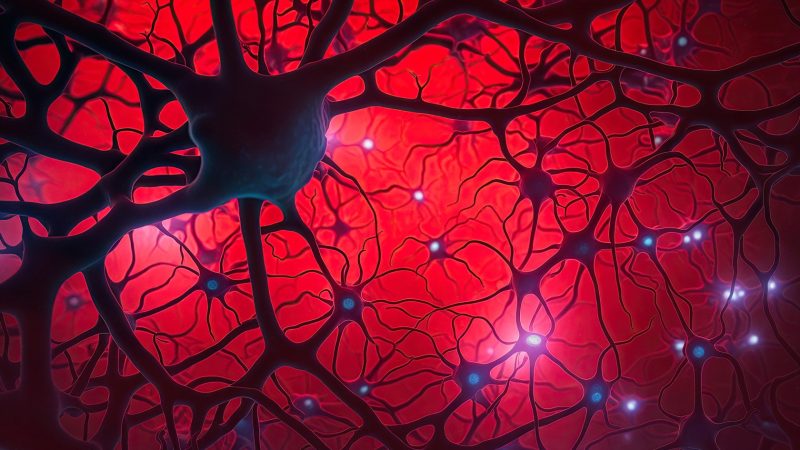Health
Faster ‘in a dish’ model may speed up treatment for Parkinson’s
Could result in personalized models to test diagnostic and treatment strategies
A new model that allows scientists to rapidly create Parkinson’s disease in a petri dish using stem cells could provide personalized diagnostic and treatment methods, according to researchers at Harvard-affiliated Brigham and Women’s Hospital.
The study’s results are published in Neuron.
Existing “Parkinson’s in a dish” models can effectively transform stem cells into brain cells, but not quickly enough to study patient-specific cellular pathologies to guide tailored treatment strategies. This is important because patients with Parkinson’s disease are diverse and a one-size-fits-all treatment strategy may not work for some patients. The Brigham research team’s technology not only enables the transformation from stem cells to brain cells to occur reproducibly within weeks instead of months, but also allows researchers to develop models that reflect the diverse protein misfolding pathologies that can occur in the brain in that timeframe.
Existing “Parkinson’s in a dish” models can effectively transform stem cells into brain cells, but not quickly enough to … guide tailored treatment strategies.
“We sought to assess how quickly we could make human brain cells in the lab that give us a window into key processes occurring in the brains of patients with Parkinson’s disease and related disorders like multiple system atrophy and Lewy body dementia,” said senior author Vikram Khurana, chief of the Movement Disorders Division at BWH and principal investigator within the Ann Romney Center for Neurologic Diseases at BWH. “And, unlike previous models, we wanted to do this in a short enough timeframe for these models to be useful for high-throughput genetic and drug screens and easy enough for many labs to use across academia and industry.”
Parkinson’s disease is a progressive and degenerative brain condition. Individuals with the disease often struggle with slowed movement, tremors, muscle stiffness, and speech impairment, among other health complications. PD, along with other neurodegenerative conditions like Alzheimer’s disease, causes protein build-up in neurons, leading to protein misfolding and impaired cell function. Current PD therapies can alleviate some symptoms but do not address the root cause of the protein misfolding.
“The problem is that the way protein clusters form in PD looks different in different patients, and even in different brain cells of the same patient,” said Khurana. “This begs the question: How do we model this complexity in the dish? And how do we do it fast enough for it to be practical for diagnostics and drug discovery?”
To create this model, Khurana’s lab used special delivery molecules called PiggyBac vectors to introduce specific cellular instructions, known as transcription factors, to quickly turn stem cells into different types of brain cells. They then introduced aggregation-prone proteins like alpha-synuclein, which is central to the formation of protein clusters in PD and related disorders, in nerve cells. Using CRISPR/Cas9 and other screening systems, they identified diverse types of inclusions forming in the cells, some of them protective and some of them toxic. To prove relevance to disease, they used their stem-cell models to discover similar inclusions in actual brains from deceased patients. The work enables new approaches for classifying protein pathologies in patients and determining which of these pathologies might be the best drug targets.
While marking progress, the model has several limitations researchers aim to address. For one, it currently generates immature neurons. The researchers aim to replicate this model with mature neurons to model the effects of aging on the protein aggregates that form. While the new system can rapidly create both neurons and key inflammatory “glial” cells in the brain, the current paper only examines these cells individually. The team is now combining these cells to study the inflammatory responses to the protein aggregation process that might be important for PD progression.
The two lead authors on the study, both research fellows in the Department of Neurology at BWH, commented on the clinical applications already underway in the lab.
“In one key application, we are utilizing this technology to identify candidate radiotracer molecules to help us visualize alpha-synuclein aggregation pathologies in the brains of living patients we see in the clinic,” said co-first author Alain Ndayisaba.
“This technology will pave the way for rapidly developing ‘personalized stem cell models’ from individual patients. These models are already being used to efficiently test new diagnostic and treatment strategies ‘in a dish’ before jumping into clinical trials so we target the right drug to the right patient,” said co-first author Isabel Lam.
Disclosures: Khurana is a co-founder of and senior adviser to DaCapo Brainscience and Yumanity Therapeutics, companies focused on CNS diseases. Co-authors Chee-Yeun Chung and Xin Jiang contributed to this work as employees of Yumanity Therapeutics. Toru Ichihashi and Yasujiro Kiyota contributed to this work as employees of Nikon Corp. Lam, Ndayisaba, Jackson Sandoe, and Khurana are inventors on a patent application filed by Brigham and Women’s Hospital related to the induced inclusion iPSC models.
Funding was provided by National Institutes of Health (NIH), Aligning Science Across Parkinson’s (ASAP), Michael J. Fox Foundation, New York Stem Cell Foundation, Multiple System Atrophy Coalition, and private donors.
Get the best of the Gazette delivered to your inbox
By subscribing to this newsletter you’re agreeing to our privacy policy





